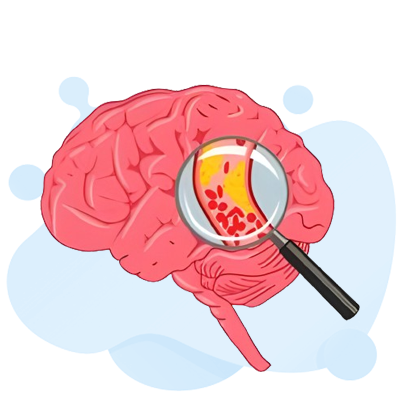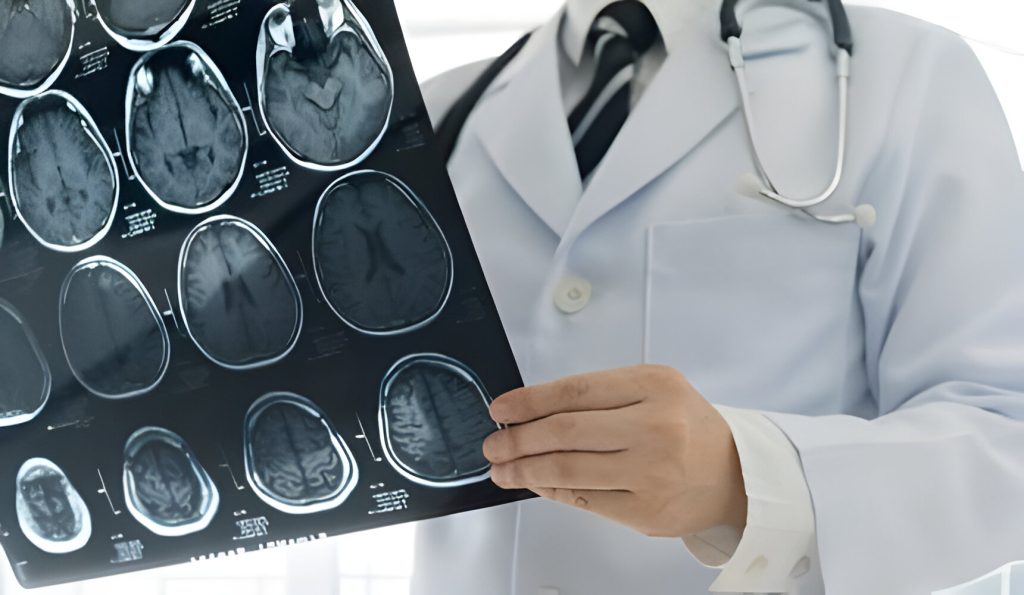NIHSS (National Institutes of Health Stroke Scale) Test

The NIHSS test is a tool to check how severe a patient’s stroke is. It’s used by many in the medical field. This includes emergency doctors, brain specialists, nurses, and those studying medicine.
This test is detailed and helps doctors and others. They understand how a stroke affects someone’s brain. This is very important for choosing the best treatment and knowing what might happen next.
Free NIHSS Practice Test Online
Key Takeaways
- The NIHSS test is a standardized way to look at how a stroke affects the brain.
- Many healthcare workers use it to decide on treatment and to guess what might happen.
- The test looks at things like if a patient is alert, if they can see clearly, move, or speak.
- It gives a number score that shows how bad the stroke’s effects are.
- It’s very important to do this test right away to help patients get the best care and get better.
Understanding the NIHSS (National Institutes of Health Stroke Scale) Test
The NIHSS test is vital in the first steps of evaluating acute stroke patients. It helps healthcare workers pinpoint the severity of neurological problems. They do this by checking the patient’s reactions and responses. Firstly, they note down the patient’s information and the time of the examination. They also record when the stroke’s symptoms began.
Assessing Level of Consciousness
The NIHSS test assigns a score to the patient’s consciousness level, from 0 to 3. Zero means the patient is alert and fully responsive. A score of 3 suggests the patient is barely or not at all responsive. This helps decide how serious the stroke is and what care the patient needs.
Testing Best Gaze and Visual Fields
This test also covers the patient’s vision and eye movements. It uses a 0 to 3 scale. A 0 means there’s no vision issue, while 3 represents complete loss of vision on both sides. Determining these scores helps healthcare staff know the extent of brain injury. It assists them in creating a personalized treatment plan.
Evaluating Facial Palsy and Motor Function
The NIHSS checks if the patient can move their face and limbs. Scoring for facial paralysis goes from 0 to 3. Zero is for normal movements, while 3 means complete paralysis. For limb movements, they use a 0 to 4 scale. Zero is for no movement detected, and 4 means no moving is possible. This information is crucial in understanding the patient’s nerve and muscle health. It helps in planning the recovery process.
Administering and Scoring the NIHSS Test
The NIHSS (National Institutes of Health Stroke Scale) test is done in a certain way. The person running the test keeps track of how well the patient does for each part. Changing scores later is not allowed. The person giving the test must stick to the directions for each part.
First, the examiner checks the patient’s Level of Consciousness (LOC). The LOC test has four scores. It ranges from 0 (Alert) to 3 (Totally unresponsive). Next, they ask the LOC Questions. The patient can get 0, 1, or 2 points based on the answers.
The examiner then looks at the patient’s Best Gaze. There are three possible scores, from 0 (Normal) to 2 (Total gaze paresis). After that, they test the patient’s Visual Fields. The scores range from 0 (No visual loss) to 3 (Cortical blindness).

Assessing Facial Palsy comes next. It can range from 0 (Normal) to 3 (Complete paralysis). The Motor Arm and Motor Leg evaluations are about muscle control. They’re scored from 0 to 4.
The Limb Ataxia test assesses limb coordination. It’s scored as absent, in one limb, or in two limbs. Lastly, the Sensory check has scores of 0 (Normal) to 2 (Total sensory loss).
The NIHSS test is key in evaluating acute stroke, neurological issues, and stroke outcomes. By looking at a patient’s deficits, healthcare pros can better triage and monitor stroke cases.
In short, the NIHSS offers a thorough way to gauge stroke seriousness. This helps doctors choose the best care and predict outcomes. With its detailed scoring on various deficits, the NIHSS is vital in acute stroke care and assessing neurological problems.
| NIHSS Test Component | Scoring Options |
|---|---|
| Level of Consciousness (LOC) | 0 (Alert), 1 (Not alert but arousable by minor stimulation), 2 (Requires repeated stimulation to attend or is obtunded), 3 (Responds only with reflex motor or autonomic effects or totally unresponsive) |
| LOC Questions | 0 (Answers both questions correctly), 1 (Answers one question correctly), 2 (Answers neither question correctly) |
| Best Gaze | 0 (Normal), 1 (Partial gaze palsy), 2 (Forced deviation or total gaze paresis not overcome by the oculocephalic maneuver) |
| Visual Fields | 0 (No visual loss), 1 (Partial hemianopia), 2 (Complete hemianopia), 3 (Bilateral hemianopia including cortical blindness) |
| Facial Palsy | 0 (Normal symmetrical movements), 1 (Minor paralysis), 2 (Partial paralysis), 3 (Complete paralysis of one or both sides) |
| Motor Arm | Scoring from 0 to 4 based on the patient’s response |
| Motor Leg | Scoring from 0 to 4 based on the patient’s response |
| Limb Ataxia | Absent, present in one limb, or present in two limbs |
| Sensory | 0 (Normal; no sensory loss), 1 (Mild-to-moderate sensory loss), 2 (Severe or total sensory loss) |

Conclusion
The NIHSS test is key in assessing strokes, helping doctors understand the damage. It looks at things like vision, weakness, ability to speak, and more. A higher score means more difficulties are likely.
Studies show that a patient’s NIHSS score a week after treatment is a good measure for success. It also helps predict how well a patient might recover. Trials involving over 1,100 people confirm the test’s reliability for checking stroke severity and treatment success.
In sum, the NIHSS is vital for stroke care, offering a detailed look at a patient’s brain function. It guides doctors on treatment and predicts outcomes. This leads to better care and outcomes for those who survive strokes.